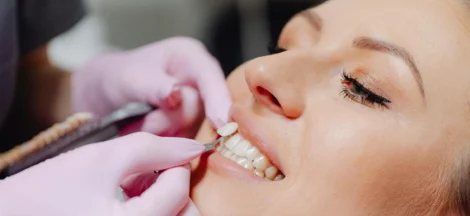If you have diabetes, it’s essential to monitor your health conditions regularly. It can be a challenge if you’re always on the go. Luckily, there are now some great tools that allow you to monitor your health remotely. This blog post will show the best ways to do this.
What is diabetes, and what are the health risks associated with it?
Diabetes is a chronic condition that occurs when too much sugar is in the blood. It can happen for various reasons, but it usually occurs when the body does not produce enough insulin or cannot use insulin effectively.
There are two types of diabetes: type I and type II. Type I diabetes usually develops in childhood and is caused by the body’s inability to produce insulin. Type II diabetes usually develops in adulthood and is caused by the body’s resistance to insulin.
Both types of diabetes can lead to serious health complications, such as heart disease, foot ulcers, stroke, kidney failure, blindness, and amputation. That’s why it’s vital to monitor your health if you have diabetes.
1. Monitor heart with remote monitoring devices
If you have diabetes, you’re at an increased risk of developing heart disease. That’s why it’s essential to monitor your heart health closely.
There are three ways to do this:
-Wear a fitness tracker or smartwatch that monitors your heart rate
-Use a phone app like Cardiogram or Heartbeat AI that uses your phone’s camera to track your heart rate
-Get a remote monitoring device called a KardiaMobile that you can use to take an electrocardiogram (EKG)
2. Monitor foot ulcers with remote monitoring devices
Foot ulcers are a common problem of diabetes. They occur when there is damage to the skin on the feet, leading to an infection.
If you have diabetes, it’s essential to monitor your feet closely for any signs of a foot ulcer. It can be done by:
- Checking your feet every day for cuts, blisters, or redness
- Use a mirror to check the bottom of your feet if you can’t see them well
- Using remote patient monitoring devices to reduce the risk of DFU recurrence for patients with diabetic peripheral neuropathy
This device has a sensory system that monitors the foot’s temperature, pressure, and vibration changes. If there is a change that might indicate the development of a foot ulcer, the device will send an alert to the patient and their doctor.
Using remote patient monitoring devices can help you catch foot ulcers early on before they become serious problems.
3. Monitor kidney function
Diabetes can also lead to kidney damage. It happens when the kidneys cannot properly filter out waste products from the blood.
If you have diabetes, it’s essential to monitor your kidney function regularly. It can be done by:
- Have your urine checked for protein (this is called a microalbuminuria test)
- Have your blood checked for creatinine (this is called a serum creatinine test)
- Using remote patient monitoring devices called home dialysis machines
Home dialysis machines can help you monitor your kidney function from the comfort of your own home. They work by filtering your blood and removing waste products. Read more about Exercises to get relief from sciatic nerve pain.
4. Monitor your blood pressure with devices
Stroke is another severe complication of diabetes. It occurs when there is a blockage or bleeds in the brain.
If you have diabetes, it’s essential to monitor your risk for stroke. It can be done by:
- Having your blood pressure checked regularly
- Using remote patient monitoring devices called “stroke risk monitors”
Stroke risk monitors are devices that you wear on your wrist. They use sensors to track your blood pressure, heart rate, and sleep. If they detect a change that could indicate a stroke, they will send an alert to you and your doctor.
5. Monitor your vision with devices
Diabetes can also lead to blindness. It happens when the blood vessels in the retina are damaged.
If you have diabetes, it’s essential to monitor your vision regularly. It can be done by:
- Having your eyes checked by an eye doctor at least once a year
- Using remote patient monitoring devices called retinal cameras
Retinal cameras are unique cameras that take pictures of the retina. These pictures can be used to check for changes in the blood vessels.
If you have diabetes, remote patient monitoring devices can help you keep track of your vision and catch any problems early on.
Healthy life with modern technologies
Diabetes is a severe disease, but you can manage it effectively with the right tools and information.
We hope this article has given you a perfect understanding of how to monitor your health if you have diabetes remotely.




 3 Great Affordable Japanese Restaurants in Melbourne
3 Great Affordable Japanese Restaurants in Melbourne